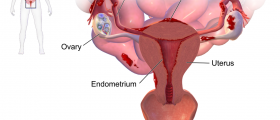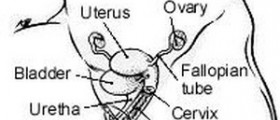
Endometriosis is a condition affecting women in their reproductive years, being blamed for many complications out of which infertility is the most serious one.
Endometrial cells are normally a part of the endometrium, the inner lining of the uterus. They are supposed to stay inside the uterus and only during menstruation some endometrial cells are expelled out of the body through the vagina. Still, in patients suffering from endometriosis, endometrial cells are found in many different organs in the pelvis and they act the same as endometrial cells in the uterus. Depending on the level of female hormones these cells cause sometimes unbearable health problems.
Why does Endometriosis Occur?
It is still unknown how endometrial cells reach other organs and settle there. However, there are several theses which may explain the presence of endometrial cell in parts of the body where they normally do not belong.
It is believed that retrograde menstruation may lead to endometriosis. Also, some experts say that Hematogenous dissemination leads to transfer of endometrial cells from the uterus to other organs.
No matter what the underlying cause is, the outcome is the same. Endometrial cells form the clumps of tissue and grow inside the affected organ. In the majority of cases these clumps affect the ovaries, fallopian tubes and the outer wall of the uterus although endometrial cell have been also found in other organs in the belly. They sometimes even end up in the lungs.Who is at Risk for Endometriosis?
All women in their reproductive years may develop endometriosis. The risk is, however, higher in women with a family history of the condition, those whose menstrual cycles last less than 28 days and women with a menstrual flow of longer than 7 days. Also, women in whom menstruation started before age 12 and those who have never given birth are also susceptible to endometriosis. Finally, any structural abnormality of the uterus, cervix and vagina may block menstrual flow and allow blood to return back, enter the fallopian tubes and spread within the pelvis.
Treatment for Endometriosis
Even though endometriosis is incurable, with suitable treatment all symptoms and signs associated with abnormally located endometrial cells can be successfully brought under control.
The goal of treatment for some women is pain reduction, while those who want to stay pregnant require a bit different approach. They may need to undergo surgery and removal of the implants.
Pain associated with endometriosis is alleviated with different pain relieving medications. Some women benefit from over-the-counter drugs, while others require more complex treatment such as birth control pills and hormone therapy. Laparoscopy is performed in order to remove clumps of endometrial cells and scar tissue. In the most severe cases, especially if the woman does not want to have children any more, doctors suggest hysterectomy.
In conclusion, endometriosis can be quite severe and rather dangerous condition, causing infertility as well as many there health issues.

















Your thoughts on this
Loading...